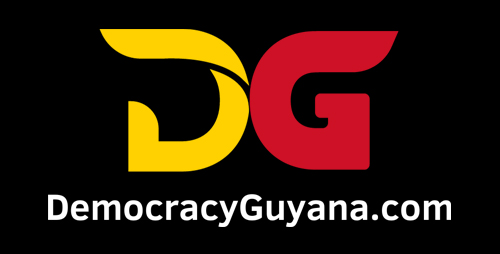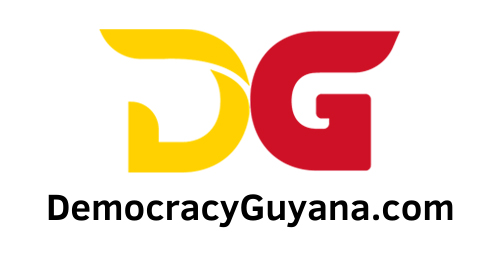Reference is made to Lalbachan Ram’s column in today’s Stabroek News (March 9, 2024), with
the caption, ‘the royal storm”. Mr. Ram, who is a conventional bookkeeper, weighed in on the
royalty debate by amplifying Prof. Hunte’s nonsensical calculations, by supplementing Hunte’s
analysis with his own version of idiocy. For the readers’ benefit, this author would like to rehash
a previous response to the Hunte’s version―and extend on that analysis in response to Ram’s
latest additions that magnified his mediocrity and dubiousness on the subject.
In that regard, readers would recall that Prof. Hunte had argued that the royalty is calculated on
profit oil instead of sales as per Article 15.6 of the Petroleum Agreement. The Professor relied
on the 2022 financial statements for ExxonMobil Guyana (EMGL, formerly EEPGL), Hess and
CNOOC for his analysis, albeit a flawed and misleading analysis.
Fortunately, the evidence disproving Hunte’s flawed analysis and computation was exhibited in
the referenced KN article (March 6, 2024, edition), wherein a copy of EMGL’s financial
statements for 2022 was included as part of the report. To this end, EMGL reported gross
revenue of G$876.8 billion in 2022, representing EMG’s 45% stake in the Stabroek Block (Hess
has 30% and CNOOC has 25%). In the said financial statement, royalty expense was G$18.9
billion, which represents 2.15% of gross revenue (sales). Similarly, Hess reported revenue of
$591.5 billion for the year 2022 and royalty expense of $12.5 billion, which represents 2.1% of
the gross revenue (sales). The only notable difference in financial reporting was by CNOOC,
whereby CNOOC’s financial statement reported on net sales as opposed to gross sales. As
such, there was no royalty expense reflected on CNOOC’s financial statements. This is where
Prof. Hunte et.al, are confused. They are not quite sure how to read and analyze the financial
statements correctly, as is evidently demonstrated herein.
Of note, the total royalties deposited into the Natural Resources Fund (NRF) in 2022 amounted
to G$32.2 billion, whereas the royalty expenses reflected on the financial statements amounted
to $31.4 billion. Clearly, the amount deposited in the NRF was greater than the reported amount
in the financial statements of the oil companies.
The reason (s) for the variances are that (i) royalties are deposited every quarter into the NRF
at the prevailing market price for crude oil, (ii) the financial statements are prepared based on
the average price for the reporting period, (iii) there would be marginal variances in the exchange
rate used for the conversion into the local currency, and (iv) there is a timing difference based
on when the royalty payments are made as explained hereunder.
Turning now to Lalbachan Ram’s contention, he boldly accused the Vice President, Dr. Bharrat
Jagdeo of not being familiar with the Petroleum Agreement (2016) (hereinafter “the PA). But
ironically, Lalbachan Ram demonstrated his own ignorance of the PA and the royalty
computation in his column, by merely citing part of the relevant Article in the PA. To this end,
Article 15.6 states that:
“The Contractor shall pay, at the Government’s election either in cash based on the value of the
relevant Petroleum as calculated pursuant to Article 13 or in kind, a royalty of two percent (2%)
of all Petroleum produced and sold, less the quantities of Petroleum used for fuel or
transportation in Petroleum Operations, from all production licenses subject to this agreement.
The Minister shall make its election in writing with effect ninety (90) days following such election
and that election shall remain in effect for the latter one (1) year or ninety (90) days from the
date the Minister notifies in writing that it elects the alternative treatment. Cash payment shall
be due quarterly, thirty (30) days following the end of each calendar quarter. Within one
hundred and eighty (180) days following the end of each Year, assessment receipts
evidencing payment of Contractor’s royalty shall be furnished by the Minister to the Contractor
stating the amount and other particulars customary for such receipts.”
Pursuant to Article 15.6 of the PA as highlighted above, the royalty payments are due in the
ensuing quarter, and in the case of the year-end period’s production, royalty payments therefrom
are due within 180 days in the ensuing year. For example, the royalty payments reflected in Q1
of 2023, for example, would be in relation to production for the preceding year (2022 Q4).
With the foregoing in mind, as of the end of 2023, the total royalty payments since inception
amounted to US$438.2 million (1.8%), total profit oil amounted to US$3.04 billion (12.5%), which
would give rise to a total production from the inception of US$24.3 billion (100%). Thus, the
royalty payments received for this period based on the total value of production was equivalent
to 1.8%, resulting in a variance of 0.2%. This is because, as explained above, there were two
(2) lifts which occurred in December 2023. Therefore, the royalty payments in relation to the
production that occurred in December 2023 will be received within the first 180 days in 2024.
In fact, evidently, Lalbachan Ram and Hunte et.al, did not even read the NRF reports thoroughly
because they would have observed in the footnotes on page 19 where it was noted that “profit
oil payments for two (2) lifts which occurred in December 2023 of US$73.573 million and
US$73.333 million are to be received on January 2 & February 14, 2024, respectively”. (see
screenshot of same below for confirmation).
Notably, Lalbachan Ram partially correctly answered his own question, wherein he said that the
observable difference between the royalty deposited into the NRF and his computation by
applying the 2% based on total production for the respective years, could be explained by the
difference in accounting methodology. In this regard, the NRF accounting is based on a cash
basis whereas the financial statements for the oil companies are prepared on an accrual basis.
Considering that the Vice President reported that no deductions of crude oil are made for
transportation and fuel costs since the FPSOs are powered with gas, this means that the 2%
royalty is applied on the total production.
In conclusion, this author would like to urge the likes of Lalbachan Ram and Hunte et.al, to
conduct more responsible, thorough, and prudent analysis and research going forward on these
complex issues that are not always straightforward.





